Interesting facts about the archaeological site of Qenqo
Qenqo (3,580 meters above sea level) is one of the most important archaeological attractions in Cusco. It is located only 4 kilometers from the ‘Imperial City’ and a few meters from Sacsayhuaman, Tambomachay, Puca Pucara and other important Inca sites. This archaeological center must have been very important due to the amazing remains that still stand despite the destruction caused by the Spaniards in the place. It is believed that Inca gods such as the sun, the moon, the mountains and the earth were worshipped there. Even today there are many mysteries surrounding this place. Learn 8 interesting facts about this incredible place.
- Inca Labyrinth?
- Subway galleries
- Small road, big road
- Amphitheater
- Blood or chicha
- Intihuatana
- The Monkey Temple
- Human sacrifices
- How to get there?
- Hours of operation
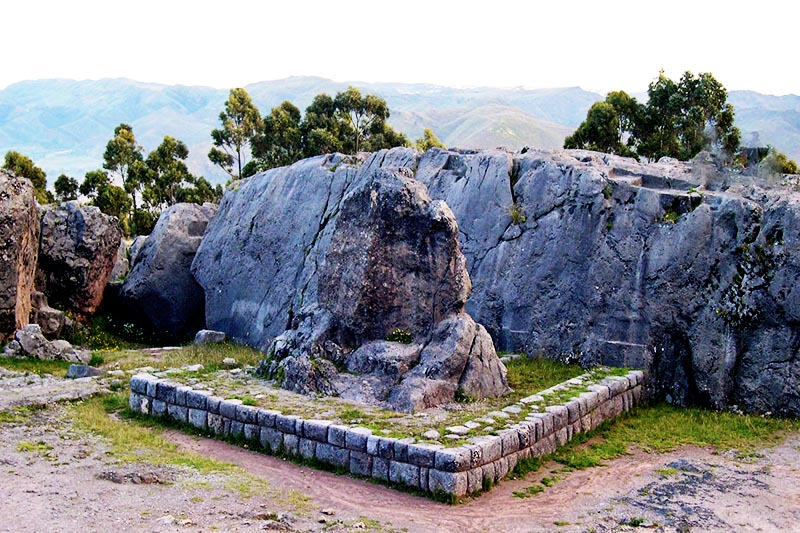
Here are some interesting facts about the mysterious archaeological complex of Qenqo
Qenqo means ‘labyrinth’ because of the subway galleries beneath its stone structures. Like Sacsayhuaman, Tambomachay and Puca Pucara; it is one of the main archaeological attractions near Cusco. The entrance is with the Cusco Tourist Ticket.
Inca Labyrinth?
Qenqo (also known as Kenko) is a Quechua word (Q’inqu) that means ‘labyrinth’. It refers to the subway galleries in various directions and zigzagging channels on stone. The Spanish gave this name after the conquest. The original Inca name is unknown. Although most of its constructions (aqueducts, terraces, trails, colcas and liturgical baths) were destroyed by the conquistadors, it is still possible to appreciate the skill with which the Incas worked the stones.
Subway galleries
Qenqo is on the current Socorro hill. This site covers an area of up to 3,500 square meters of rocky land. This terrain was ideal for the construction of subway galleries, which are one of the site’s main attractions. These lead to various areas of the archaeological complex. Like Puca Pucara and Sacsayhuaman, the existence of these subway tunnels or ‘chincanas’ was of great importance. It is even believed that in the fortress of Sacsayhuaman there is a tunnel that connects to the Coricancha (Temple of the Sun).
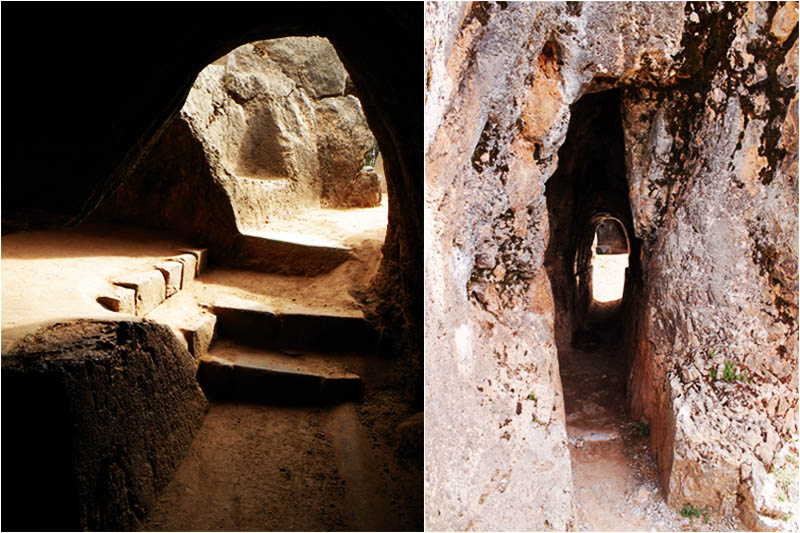
Qenqo subway galleries
Small road, big road
The archaeological site of Qenqo is divided into two places according to the roads that lead to it: the small road and the big road. The first one crosses a slope of the Socorro hill. The second is the longer one, which is at the foot of the hill and leads from Sacsayhuaman to Pisac. Qenqo Grande includes most of the current tourist constructions such as the subway galleries Qenqo Chico, on the other hand, is almost destroyed except for some carved stone walls and the urban layout of the site.
Amphitheater
In the same style as the Roman amphitheaters, the Incas built in Qenqo a semicircular platform 55 meters long surrounded by unfinished niches. In the middle is a huge stone block (6 meters) of irregular shape erected in a rectangular block. In this place is the carved passage that leads to the subway galleries. Although it is popularly known as an amphitheater, its purpose is still uncertain. It is presumed that this place must have served as a ceremonial center. The destruction caused during the conquest does not allow us to appreciate the true majesty of the site.
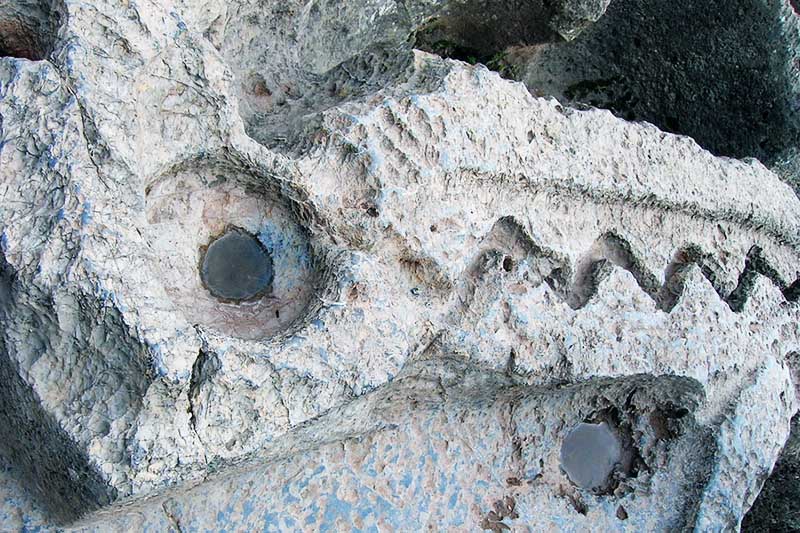
Carved stone where blood and chicha were offered
Blood or chicha
Like many ancient cultures, the Incas offered the blood of different animals to worship their gods. They even made human sacrifices. Among the most used elements for these rites are the blood of llamas, alpacas, or chicha, a fermented grain-based drink. In Qenqo there is a rocky elevation that leads to a carved stone stairway to the top. There the Incas worked a hole that descends in a zigzag until it divides in 2 points, one until the subway galleries and the other one that continues in a slope. It is presumed that chicha or llama blood was offered there.
Intihuatana
One of the main attractions of the Inca citadel of Machu Picchu is the Intihuatana (‘place where the sun is tied’) or astronomical observatory to calculate the solar position. A similar construction exists in several important archaeological sites such as Ollantaytambo and Qenqo. The latter is located on the base of a rock where two small cylindrical formations stand out. This lithic structure must have served as an astronomical observatory where the seasonal changes were calculated as well as a shrine to the sun, the moon, and the stars.
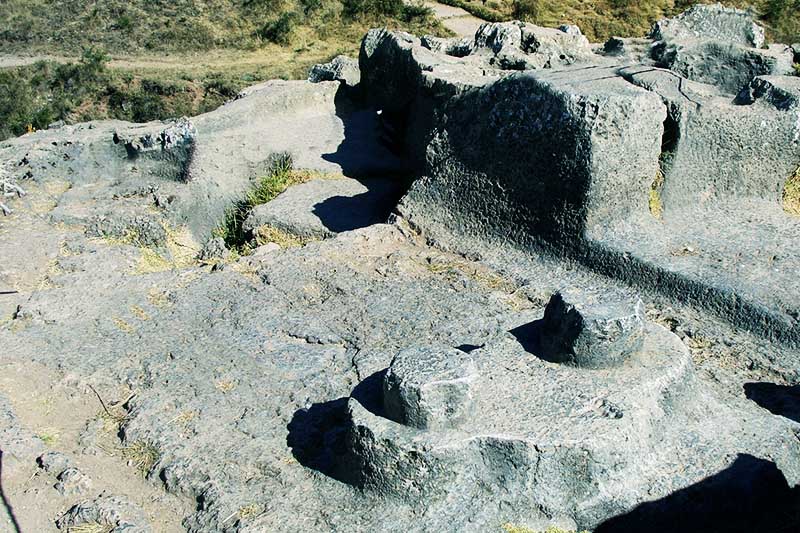
Intihuatana, a structure that served as an astronomical observatory
The Monkey Temple
At 500 meters from Qenqo Grande there are some constructions of irregularly carved rock called Cusillachayoc, a Quechua word translated as Temple of the Monkeys. This rock has zoomorphic figures in relief which stand out in the forms of snakes and monkeys; which gave the name to the enclosure. Due to the destruction of the site, many of the main structures are deteriorated. The remains of a water conduit and the rock whose figure was probably that of a puma can be seen at the site.
Human sacrifices
The Incas performed human sacrifices called ‘capacocha’. In Qenqo it is believed that there was a mortuary room called ‘Sacrificial Hall’. This platform carved in a rock of great dimension resembles a great seat and is located in the subway galleries. In this structure were carved floors, walls, ceilings, niches, and other forms in which, it is presumed, human and animal sacrifices were made as well as embalming. The mortuary room is one of the spaces of the enclosure in better condition.
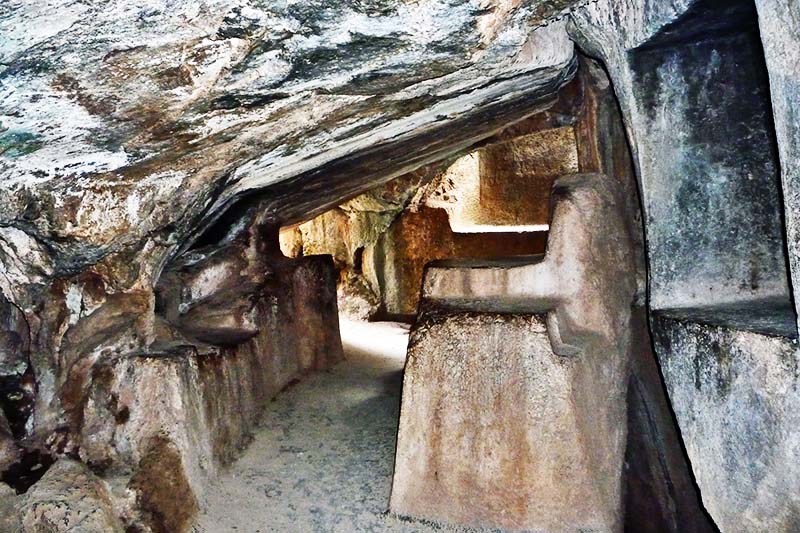
Sacrificial Hall
How to get there?
From the main square it takes about 15 minutes by bus to get to Qenqo. You can hire a City Tour or a private service. On foot, it takes about 50 minutes. The entrance is with the Cusco Tourist Ticket.
Hours of operation
Monday to Sunday from 07:00 a.m. to 06:00 p.m.
Advice from people who have been there
 By: Héctor D.
By: Héctor D.“Very good visit, close to the city!“
“Qenqo offers one of the best panoramic views of the city. It has a rocky conduit with an interior room, with a table-like rock that could be both for sacrifices and for embalming.“
By Ticket Machu Picchu – Last updated, July 9, 2024